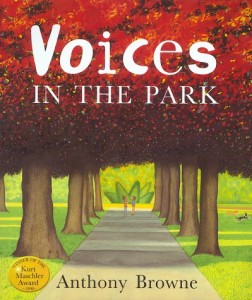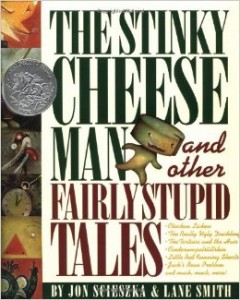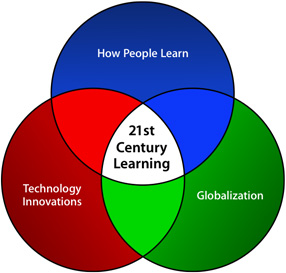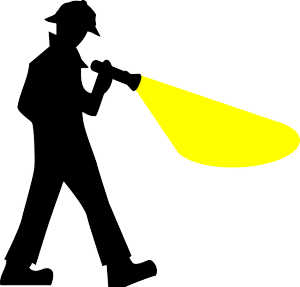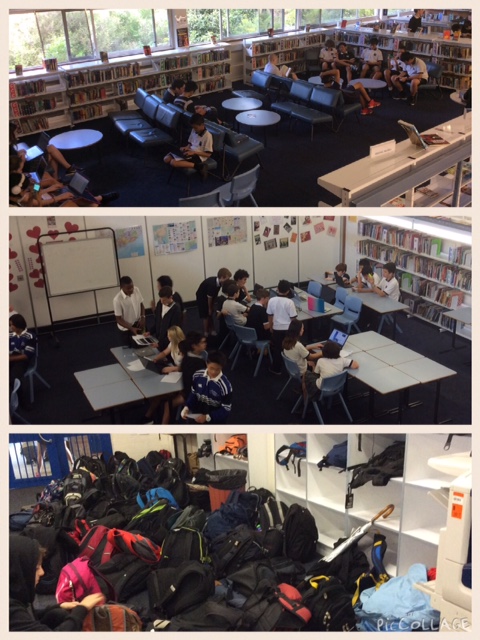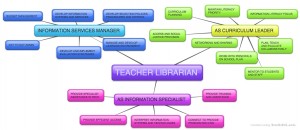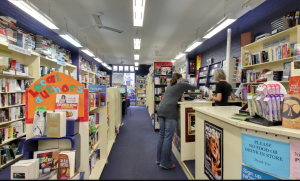INF506 Evaluative Statement:
Evidence of meeting the learning objectives…
How effectively we build and maintain relationships determines the success we experience in our roles as Information Professionals. Without those relationships – there is no work. Social networking provides a virtual world in which we can deepen those connections, work on those relationships, be more available as information professionals. The learning modules of INF506 are designed to develop an understanding of social networking technologies, policy and procedures, and how to critically assess their usage to connect, communicate, collaborate and create.
To demonstrate my deepening understanding of social networking technologies and examine their features and functionality, I have immersed myself in a range of those technologies and used my online learning journal (OLJ) to explore the issues surrounding facebook for schools, promoting ethical behaviour online through edmodo, and using twitter analytics to understand networks.
In my OLJ post titled Edmodo, school libraries and promoting ethical online behaviour (Hogg, 2016a), I used the American Association of School Librarians’ “Standards for the 21st-Century Learner” to explore the learning opportunities of  using the social networking platform, edmodo. School libraries have an opportunity to address these standards by incorporating appropriate social networking platforms in their library teaching programs (Agosto and Abbas, 2011) and I have subsequently established edmodo groups for a range of purposes within my school library.
using the social networking platform, edmodo. School libraries have an opportunity to address these standards by incorporating appropriate social networking platforms in their library teaching programs (Agosto and Abbas, 2011) and I have subsequently established edmodo groups for a range of purposes within my school library.
Edmodo is a safe online platform to provide students with the opportunity to explore the social networking practices of posting and liking within group and subgroup membership. With supervision provided by the owner of group, a teacher or teacher librarian, can nurture the skill set of writing and responding to online conversation threads. Edmodo also has many integrated features and embedded applications that give students the opportunity to develop their information and communication technology skill set.
To understand the theory and practice of Library 2.0 and participatory library service I have researched and analysed the work of State Library NSW and State Library Victoria and written about these libraries in my OLJ post Social media and Web 2.0 Libraries (Hogg, 2016c).
Both of these libraries have a strong presence across a range of social media platforms and are great examples of how the use of social media can enhance their core business.
- Both libraries have strong brand connections that are maintained on these platforms.
- They promote the library’s resources, services and events and provide key information direct to clients.
- The social media accounts are well maintained and provide another point of contact for users.
- They engage volunteers to participate in projects related to library collections.
- They engage users by facilitating discussion groups and offer collaborative work opportunities.
- Create the impression of modern, progressive, responsive Library 2.0.
To evaluate social networking technologies and software to support informational and collaborative needs of workgroups and communities, I completed a project utilising a range of social networking technologies to build a teacher learning community. This provided me with an opportunity to become familiar with social media policy, theory related to developing Communities of Practice (CoP), leadership issues in establishing a CoP. This project also provided the vehicle to demonstrate an understanding of the social, cultural, educational, ethical, and technical management issues that exist in a socially networked world, and how information policy is developed and implemented to support such issues.
This project and the course content on Library 2.0 led to my further exploration of the use of social media by school and public libraries. This research found the authors Agosto and Abbas, and my OLJ post Teens, libraries and social networking (Hogg, 2016d). Teens use social media to develop and connect within their social networks (Agosto & Abbas, 2009). Much of this is bidirectional information sharing and social interaction. Attempting to tap into this social networking for young adults is a new challenge for library services.
As schools strive to continuously improve and evolve as learning organisations, it makes sense to implement mechanisms to improve relationships and communication structures within these teacher communities (Barth, 1991; Ferriter, 2010). Improving schools involves change (Boyd-Dimock, 1992). The use of social networking has a range of benefits that support these endeavours and enhance the 21st century skills of teaching staff (Arendt, 2009; Baird & Fisher, 2005; Bradley, 2015; Kivunja, 2014). INF506 has been a vehicle for me to experience deeper learning in using social networking tools for more than just social participation, to develop stronger connections with an expanding professional learning network and to explore the significant challenges of building school-based teacher learning communities (McLaughlin & Talbert, 2006).
Developing as an information professional…
To achieve deeper learning (as defined by William and Flora Hewlett Foundation, 2013) involves
- the mastering of core academic content,
- to think critically and solve complex problems,
- communicate effectively,
- work collaboratively,
- learn how to learn,
- develop academic mindsets
The core academic content of INF506 has helped me to understand that being a Librarian 2.0 is about mindset, transferable skills and interpersonal strengths (Adams, 2007; Partridge, 2011; Partridge, Lee & Munro, 2010). Brabazon (2014) suggests that the role of librarians is to ‘reintermediate the information landscape with regard to quality and relevance’. The important characteristics here are flexibility – to adapt to a changing information landscape; openness – to change in technologies, learning theories and pedagogies; willingness – to connect and collaborate and support the learning of users; inquisitiveness – to explore new models of utilising information and library spaces. Social networking technologies are a means to enable information professionals to lead lifelong learning as a participant and role model, rather than languishing in library models of a century that is past. INF506 has provided an opportunity to explore these potentials and expand by professional learning network.
The learning modules of INF506 have confirmed that the knowledge and skills needed to be a Librarian 2.0 are not achieved in a vacuum but require the development of underlying dispositions and behavioural capacities to connect and collaborate in order to embody lifelong learning. Librarian 2.0 needs self regulation, adaptability and tenacity (Hallam, 2014) to gain the skills needed to support users of a variety of technologies and help them navigate the information tsunami that the internet has afforded. In fact, Partridge (2011) posits that Librarian 2.0 is more about attitude and thinking than it is about books and cataloguing. It’s about branding and profile. INF506 gave me the opportunity to farm my digital footprint and reflect on my participation on a range of social networking platforms for a leaner professional profile.
For INF506, the opportunity to think critically and solve complex problems was provided by the Social Networking Report assignment. This assignment required the design and implementation of a unique social networking project to support the information, learning, social and organisational needs of a group of people. It was a practical task that required the implementation of a real project. My assignment involved collaborating on a project to explore the use of social networking technologies to develop a Community of Practice (CoP) within my college. Analysing participation and engagement amongst my staff provided many opportunities to connect and collaborate in both the real and virtual worlds.
Using a Facebook group for INF506, alongside exploring the many social networking technologies that are the subject of  inquiry in the course content, provided a range of opportunities to make new connections and to communicate effectively and work collaboratively with other students in the course, as well as my colleagues and students. I am now using these technologies more efficiently and with a clearer agenda and skill set. The methodology of this subject has also widened my knowledge of “learning how to learn”.
inquiry in the course content, provided a range of opportunities to make new connections and to communicate effectively and work collaboratively with other students in the course, as well as my colleagues and students. I am now using these technologies more efficiently and with a clearer agenda and skill set. The methodology of this subject has also widened my knowledge of “learning how to learn”.
In addition to all these areas of learning, INF506 provided the chance to develop a deeper academic mindset regarding the underlying theory of online social networks. The assignment project led to research Bandura’s Social Learning Theory (Bandura, 2011) and began an ongoing project to learn more about the challenges of developing teacher Communities of Practice (Wenger-Trayner, 2015) and the challenges of Open Leadership (Hogg, 2016b). Learning communities build knowledge by providing a “social life” for information, and this gives teachers an opportunity to turn data into new information through discussion and reflection (Brown & Duguid, 2000). It would seem obvious that school teaching staff should be members of a learning community within their schools, yet the very nature of teaching is that it is an isolated activity, so if we are to promote change in teaching practice, and professionally develop teachers who are already on busy schedules (Cochrane, 2013), and shift thinking to a CoP, then the opportunities afforded by the use of social networking tools can provide both asynchronous and synchronous opportunities to access busy teachers and empower them to build social capital (Bourdieu, 2011) through supporting their efforts to participate in professional development delivered via these tools. Participating in professional conversation, accessing professional reading, being provided with opportunities to participate in professional learning – can all be established through social networking channels (Goodyear et al, 2014; Hay, 2010).
References:
Abram, S. (2005). Web 2.0, huh?! Library 2.0, librarian 2.0. Information Outlook, Vol. 9(12), pp. 44–46.
Agosto, D.E. & Abbas, J. (ed) (2011) Teens, libraries and social networking : what Librarians need to know. Santa Barbara, Calif. : ABC-CLIO.
Arendt, A. (2009). Social Media Tools and the Policies Associated with Them, Best Practices in Policy Management Conference. Utah Valley University, November. Retrieved from: http://works.bepress.com/cgi/viewcontent.cgi?article=1006&context=anne_arendt
Bandura, A. (2011) Social learning theory. [online] Available at: http://www.learning-theories.com/social-learning-theory-bandura.html
Baird, D.E. & Fisher, M. (2005) Neomillennial user experience design strategies: utilizing social networking media to support “always on” learning styles. Journal of Educational Technology Systems. Sept.1, 2005.
Barth, R.S. (1991). Restructuring schools: some questions for teachers and principals. Phi Delta Kappan. 73(2), pp. 123-128.
Bourdieu, P. (2011). The forms of capital.(1986). Cultural theory: An anthology, 81-93. Retrieved from: http://eppl751su2012.wmwikis.net/file/view/Bourdieu.ch6.Forms.of.Capital.pdf/350871874/Bourdieu.ch6.Forms.of.Capital.pdf
Boyd-Dimock, V. (1992) Creating a context for change. Issues …about Change. Vol.2, No.2. [online] Available at: http://www.sedl.org/change/issues/issues22.html
Brabazon, T. (2014). The disintermediated librarian and a reintermediated future. Australian Library Journal. Vol. 63 no.3, pp. 191-205.
Bradley, P. (2015) Social media for creative libraries. London : Facet Publishing.
Brown, J.S., & Duguid, P. (2000). The social life of information. Cambridge, MA : Harvard Business School Press.
Cochrane, T. & Narayan, V. (2013) Redesigning professional development: reconceptualising teaching using social learning technologies. Research in Learning Technology. Vol. 21, 2013.
Ferriter, W. (2010) Using social media to reach your community. Educational Leadership, Dec, 2010, Vol.68(4), p.87-88
Goodyear, V.A.; Casey, A. & Kirk, D. (2014) Tweet me, message me, like me: using social media to facilitate pedagogical change within an emerging community of practice. Sport, Education and Society, 2014, Vol. 19, No. 7, 927-943, DOI: http://dx.doi.org/10.1080/13573322.2013.858624
Hardy, I. (2008) The impact of policy upon practice: an Australian study of teachers’ professional development. Teacher Development. Vol.12, (2) pp.103-113.
Hallam, G. (2014) Victorian public libraries : our future, our skills : research report. Melbourne : State Library of Victoria. Available online at: http://www.plvn.net.au/sites/default/files/Skills%20Audit%20Report%20FINAL.pdf
Hogg, D. (2016a) Edmodo, school libraries and promoting ethical online behaviour. [online] Available at: http://thinkspace.csu.edu.au/debhoggoz/2016/03/29/edmodo-school-libraries-and-promoting-ethical-online-behaviour/
Hogg, D. (2016b) Open leadership : the social media challenge. Available at: http://thinkspace.csu.edu.au/debhoggoz/2016/05/21/open-leadership-the-social-media-challenge/
Hogg, D. (2016c) Social media and web 2.0 libraries. [online] Available at: http://thinkspace.csu.edu.au/debhoggoz/2016/05/22/social-media-and-web-2-0-libraries/
Hogg, D. (2016d) Teens, libraries and social networking. [online] Available at: http://thinkspace.csu.edu.au/debhoggoz/2016/05/21/teens-libraries-and-social-networking
King, D. L. (2007, July 11). Basic competencies of a 2.0 librarian, take 2. Available at: http://www.davidleeking.com/2007/07/11/basic-competencies-of-a-20-librarian-take-2/
Kivunja, C. (2014). The use of social media technologies as novel ways to teach and to promote learning. Proceedings of the e Skills for Knowledge Production and Innovation Conference 2014, Cape Town, South Africa, 551-564. Available at: http://proceedings.e-skillsconference.org/2014/e-skills551-564Kivunja922.pdf
McLaughlin, M.W. & Talbert, J.E. (2006) Building school-based teacher learning communities: professional strategies to improve student achievement. New York:Teachers College Press.
Partridge, H. (2011) Librarian 2.0 : it’s all in the attitude! In Mueller, Dawn (Ed.) Declaration of Interdependence : the Proceedings of the ACRL 2011 Conference, Association of College and Research Libraries, Philadelphia, PA. [online] Available at: http://www.ala.org/acrl/sites/ala.org.acrl/files/content/conferences/confsandpreconfs/national/2011/papers/librarian2.0.pdf
Partridge, H., Lee, J., & Munro, C. (2010). Becoming librarian 2.0: the skills, knowledge and attributes required by library and information professionals in a web 2.0 world (and beyond). Library trends v59. No. 1-2, pp. 315-335. Available at: https://www.ideals.illinois.edu/bitstream/handle/2142/18735/59.1-2.partridge.pdf
Senge, P., Roberts, C., Ross, R., & Smith, B. (1994) The fifth discipline field book: Strategies and tools for building a learning organisation. New York: Doubleday.
Wenger-Trayner, E. & Wenger-Trayner, B. (2015) Communities of practice: a brief introduction. [online] Available at: http://wenger-trayner.com/wp-content/uploads/2015/04/07-Brief-introduction-to-communities-of-practice.pdf
William and Flora Hewlett Foundation (2013) What is deeper learning? [online] Available at: http://www.hewlett.org/programs/education/deeper-learning/what-deeper-learning


